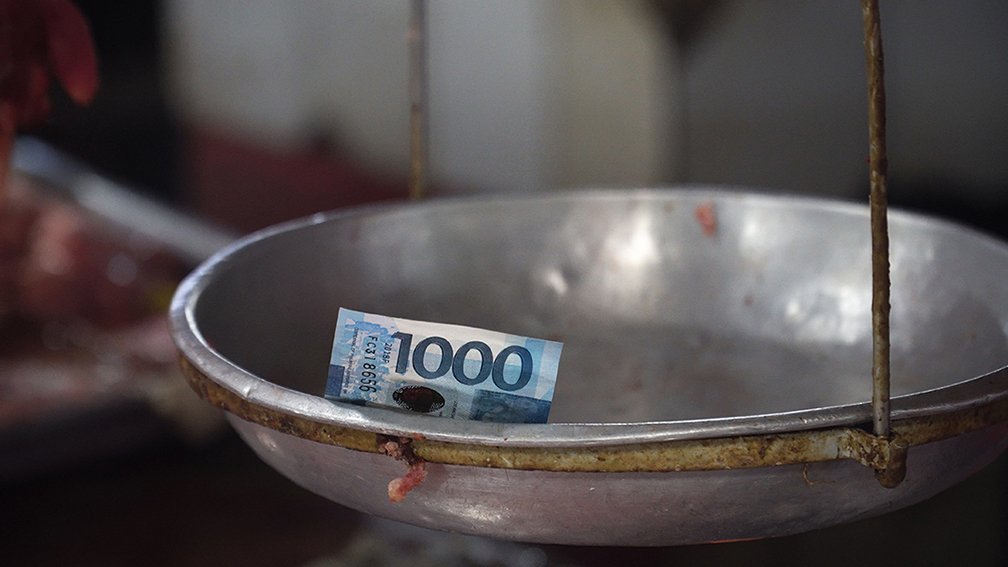CHEAPER food items may continue to sustain the country’s low inflation rate in the coming months, according to local economists.
On Friday, the Philippine Statistics Authority (PSA) disclosed that the country’s inflation rate averaged 1.9 percent in September, the lowest in four years or since the 1.6 percent posted in May 2020.
The inflation recorded by food and non-alcoholic beverages slowed to 1.4 percent in September 2024. This commodity group posted an inflation rate of 3.9 percent in August 2024.
“For the next few months, yes [inflation will be sustainable] because of easing of food prices,” Philippine Institute for Development Studies Senior Research Fellow Roehlano Briones told the BusinessMirror.
National Statistician Claire Dennis S. Mapa said the slowdown in inflation was driven by cheaper food and non-alcoholic beverages, which accounted for 69.1 percent of the downtrend.
Rice prices alone only posted an inflation rate of 5.7 percent, the slowest since the 4.2 percent posted in July 2023.
Briones noted that the decision of India to relax its export restrictions on rice can be a major factor in the slowdown in rice prices in the global market.
Bank of the Philippine Islands Chief Economist Emilio S. Neri Jr. told the BusinessMirror that rice prices in major rice producers such as Vietnam and Thailand have also been lower for the past three months.
“Rice can be a negative contributor to headline inflation in the next 12 months as domestic production improves on better weather and if global price benchmarks continue to fall,” Neri said.
According to Rizal Commercial Banking Corporation (RCBC) Chief Economist Michael L. Ricafort, the rise in commodity prices could hover at around 2 percent for the rest of 2024, given the September inflation print.
He also noted that the average inflation could be closer to 3 percent in 2024 given that the nine-month period figure is at 3.4 percent, within the BSP’s target.
“However, there could still be spillover effects on inflation by the storm/flood damage by Typhoon Enteng, Julian, other typhoons, and the other series of habagat recently,” Ricafort said. Still, he added, the “price freeze in effect in areas where state of calamity was declared up to 60 days…could temper price increases after storms/floods.”
Ricafort noted that this is within the 2- to 4-percent target set by the Bangko Sentral ng Pilipinas (BSP). This could also be cited by the Monetary Board as justification for its decision to cut rates further or even “match any future [US] Fed rate cuts from 2024-2026.”
In Ricafort’s view, this is consistent with “recent aggressive monetary easing signals,” such as the reduction in the Reserve Requirement Ratio (RRR), which could reach zero within the term of BSP Governor Eli M. Remolona Jr.
BSP: Sept was below estimate
For its part, the BSP said the latest inflation print was below its 2- to 2.8-percent estimate for September. However, it remained consistent with the BSP’s assessment that inflation will continue to trend downward.
BSP said the risks for the inflation outlook will continue to “lean toward the downside” for this year and next year but may have a slight uptick in 2026.
“The downside risks are linked mainly to the impact of the lower import tariffs on rice, while upside risks come from higher electricity rates and external factors such as worsening geopolitical risks in the Middle East and Ukraine, which could impact global oil and food prices as well as the exchange rate,” BSP said.
Neda cites tariff cuts
Meanwhile, the National Economic and Development Authority (Neda) highlighted the importance of the reduction in rice tariffs in maintaining the downtrend in inflation.
Neda noted that Executive Order No. 62 reduced rice tariffs to 15 percent to sustain sufficient rice supply and keep prices affordable amid rising global prices.
Rice inflation dropped significantly to 5.7 percent from 14.7 percent the previous month. Meanwhile, a steady supply of high-value crops amid favorable weather conditions reduced vegetable prices (-15.8 percent from -4.3 percent).
“While we expect lower tariffs to reduce rice prices, we should continuously support local production through increased agricultural funding to complement this short-term measure,” Socioeconomic Planning Secretary Arsenio M. Balisacan said in a statement.
The latest data, Balisacan added, bodes well for the Philippine economy as it could boost consumer confidence, drive spending and consumption, and fuel business expansion.
“Easing food prices will relieve low-income households, enabling them to allocate more to other essential needs such as education and health. We will sustain the momentum as we assure the public that we will continue to pursue and carry out strategies to maintain stable prices of food and other commodities,” Balisacan said.
Balisacan said the Department of Agriculture (DA) has partnered with the Development Bank of the Philippines (DBP) to launch the Agri-Puhunan at Pantawid Program, offering low-cost credit facilities to 50,000 rice farmers. Each farmer is eligible for up to P58,000. The DA and DBP have initially secured P3 billion to implement the program.
Moreover, Balisacan said the government is ready to address other inflationary pressures affecting food, such as the continuing prevalence of African Swine Fever (ASF), through the delivery of vaccines.
Following the successful rollout of the ASF vaccine in Lobo, Batangas, the DA is set to expand vaccination efforts to La Union, Quezon, Mindoro, North Cotabato, Sultan Kudarat, and Cebu, with an additional 150,000 doses of the AVAC Vietnam vaccine for further testing.
Image credits: MICHA360 | DREAMSTIME.COM




